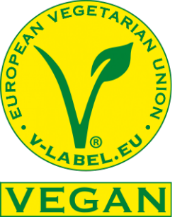Histamine-free wine?
A new idea was born from a suggestion.

The start
Histamine in wine – our research into “histamine-free” wine began in 2005. When customers drew our attention to the issue of histamine intolerance, we began to steadily reduce the histamine content in our wines. At that time, there were no studies in the field of histamine and wine. This is how we have become a driving force of innovation in this field.
From our young and fresh Grüner Veltliner to our top red wines matured in wooden barrels: all wines have histamine residual values below 0.1 mg/l.
Since 2009, our entire range of wines has been produced with histamine residual values of less than 0.1 mg/l.
Winemaker Rainer Allacher
Many tests, histamine analyses and discussions with experts in the field of histamine intolerance were necessary in order to be able to offer wines which, compared to traditionally produced wines, do not show any impairment of taste or quality. In 2007, the time had come: We were able to produce the first red wine with a provable histamine residual value of less than 0.1 mg/l which we could offer as “histamine-free” wine for the first time.
„It is not about reducing the histamine content in the wine afterwards, but about preventing the formation of histamine. We have developed our own process for this which is perhaps unique in the wine world.“
Winemaker Rainer Allacher


If you suffer from a histamine intolerance (HIT), you should try our wines.
We do have decades of experience and as I myself am affected by a histamine degradation disorder, we know that our wines will very probably be easily digestible for you.
That is why you should justtryour wines for taste and digestibility.
When tasting, it is important to keep a diet of 8 hours or only eat histamine-free food before drinking the wine. This will ensure that the food does not react to the alcohol and cause symptoms of HIT. Of course, everyone’s tolerance levels are different.
What is histamine?
Histamine intolerance is the inability to digest histamine. It can be caused by a deficiency of the histamine-degrading enzyme diamine oxidase (DAO) or by an imbalance between histamine supply and decomposition. The estimated number of unreported cases of people suffering from histamine intolerance is 20 %.
How is it possible to produce wines with such low histamine values?
Actually, this is of course a well-kept secret. Nevertheless, we want to share some details with you:
- rapid processing of the grapes
- extremely clean and hygienic working conditions
- the histamine level can be influenced by the biological acid degradation
- the histamine formation can be influenced by the alcoholic fermentation
- the histamine content also depends on the type of wine
- wooden barrels can have a strong influence on the histamine content
According to the EU regulation, the terms “low-histamine wine” or “histamine-free wine” may no longer be used as of 1.1.2015.
* The histamine analyzes are carried out immediately before or after bottling. Due to the deviation of the individual laboratories, we can only confirm the histamine value at this point in time!









